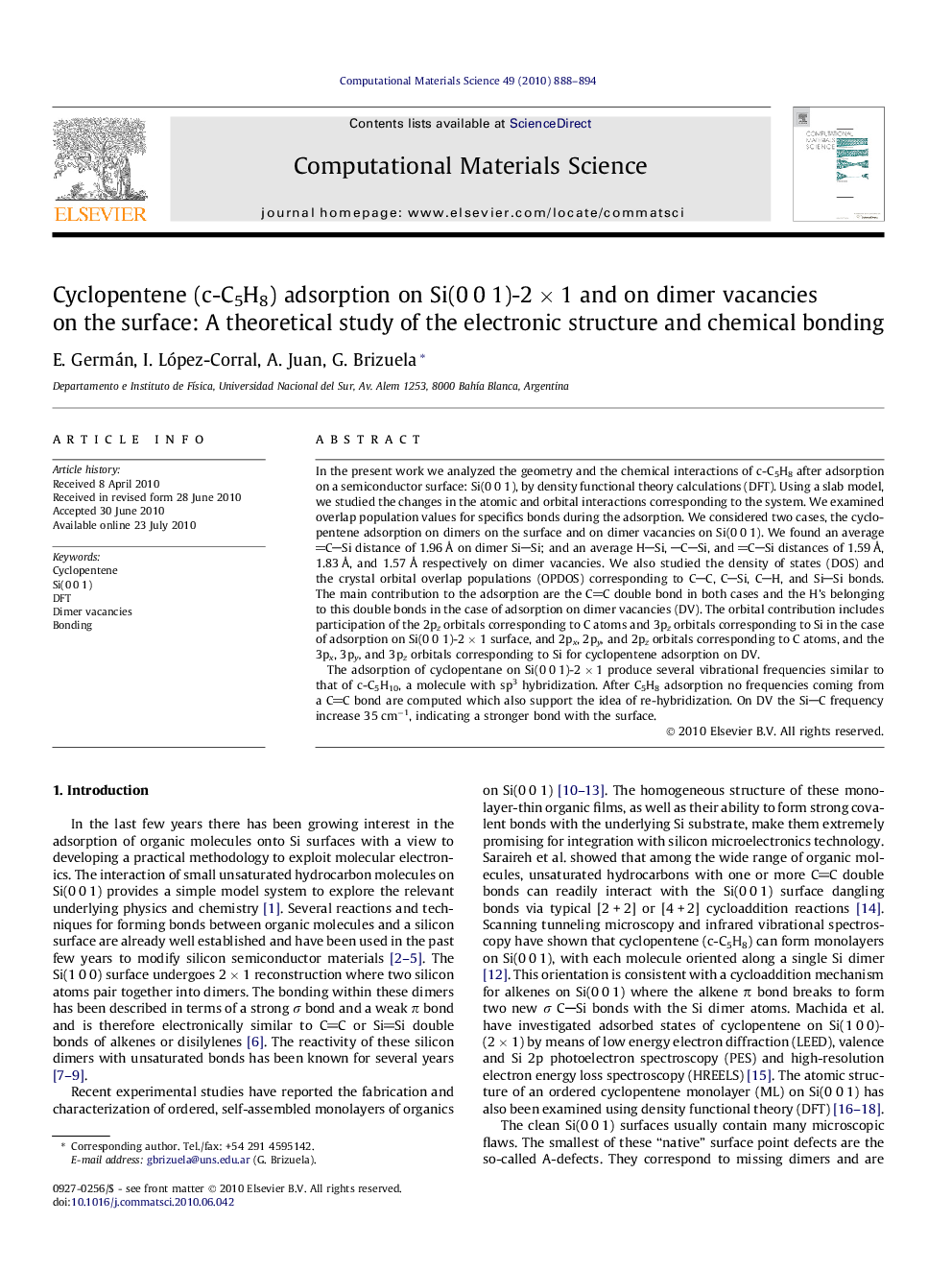| Article ID | Journal | Published Year | Pages | File Type |
|---|---|---|---|---|
| 1562313 | Computational Materials Science | 2010 | 7 Pages |
In the present work we analyzed the geometry and the chemical interactions of c-C5H8 after adsorption on a semiconductor surface: Si(0 0 1), by density functional theory calculations (DFT). Using a slab model, we studied the changes in the atomic and orbital interactions corresponding to the system. We examined overlap population values for specifics bonds during the adsorption. We considered two cases, the cyclopentene adsorption on dimers on the surface and on dimer vacancies on Si(0 0 1). We found an average CSi distance of 1.96 Å on dimer SiSi; and an average HSi, CSi, and CSi distances of 1.59 Å, 1.83 Å, and 1.57 Å respectively on dimer vacancies. We also studied the density of states (DOS) and the crystal orbital overlap populations (OPDOS) corresponding to CC, CSi, CH, and SiSi bonds. The main contribution to the adsorption are the CC double bond in both cases and the H’s belonging to this double bonds in the case of adsorption on dimer vacancies (DV). The orbital contribution includes participation of the 2pz orbitals corresponding to C atoms and 3pz orbitals corresponding to Si in the case of adsorption on Si(0 0 1)-2 × 1 surface, and 2px, 2py, and 2pz orbitals corresponding to C atoms, and the 3px, 3py, and 3pz orbitals corresponding to Si for cyclopentene adsorption on DV.The adsorption of cyclopentane on Si(0 0 1)-2 × 1 produce several vibrational frequencies similar to that of c-C5H10, a molecule with sp3 hybridization. After C5H8 adsorption no frequencies coming from a CC bond are computed which also support the idea of re-hybridization. On DV the SiC frequency increase 35 cm−1, indicating a stronger bond with the surface.
